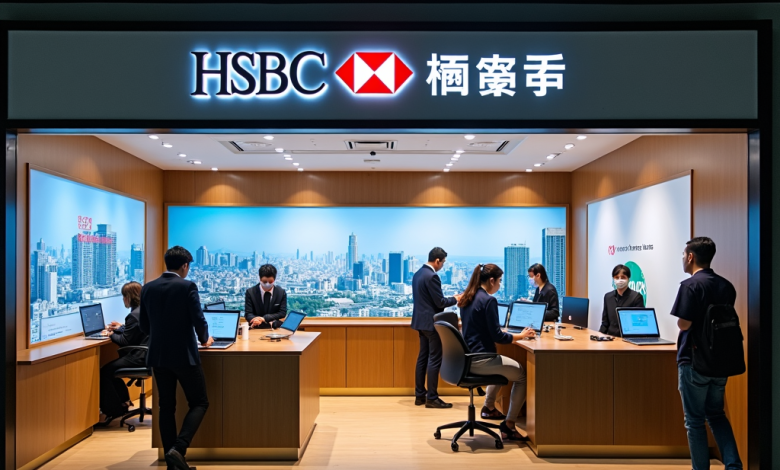HSBC’s Strategic Initiatives for Growth in Asia

HSBC Positions for Growth Through Strategic Initiatives
HSBC is positioning itself for growth through strategic initiatives, despite facing some headwinds. The bank’s restructuring efforts, favorable interest rate environment, and focus on Asian markets provide a foundation for potential expansion, though challenges remain.
Restructuring for Efficiency
HSBC’s restructuring efforts aim to streamline operations and improve efficiency. The bank is exiting non-core markets and simplifying its organizational structure to reduce complexity and costs. This includes branch closures in mature markets and workforce optimization initiatives. HSBC is also investing heavily in digital transformation, upgrading its technology infrastructure and enhancing digital banking capabilities to meet evolving customer needs and improve operational efficiency. By implementing these changes, HSBC is positioned to adapt to the demands of a competitive financial landscape.
Capitalizing on Interest Rates
The current interest rate environment presents opportunities for HSBC to boost its net interest income. Higher rates are likely to improve net interest margins and enhance profitability in lending operations. However, the bank must carefully manage potential risks associated with rate volatility, including its impact on loan demand and the need for prudent asset-liability management. It’s crucial for HSBC to maintain a robust strategy for navigating these fluctuations to continue capitalizing on favorable market conditions.
Strategic Focus on Asia
HSBC’s strategic focus on Asian markets, particularly Greater China and Southeast Asia, is a key driver of its growth strategy. The bank is investing significantly in wealth management services, targeting affluent and high-net-worth individuals with expanded product offerings. Furthermore, HSBC is well-positioned to capitalize on opportunities arising from China’s Belt and Road Initiative, leveraging its expertise in trade finance and cross-border banking services. This regional emphasis not only aligns with market demands but also reinforces HSBC’s commitment to being a leading financial institution in the Asia-Pacific region.
Ongoing Challenges
Despite these positive factors, HSBC faces ongoing challenges. Cost pressures remain a concern, with regulatory compliance expenses and technology investment costs impacting profitability. Revenue headwinds persist in some segments due to competitive pressures and potential economic slowdown impacts. Additionally, geopolitical risks, including US-China tensions and Brexit-related uncertainties, add further complexity to HSBC’s operating environment. Addressing these challenges will be essential for ensuring long-term sustainability and growth.
Future Outlook
Looking ahead, HSBC’s strategy balances growth potential with prudent risk management. The bank is focused on careful capital allocation and maintaining a strong liquidity position. Enhancing customer experience through data analytics-driven personalization and omnichannel banking capabilities is a priority. As part of its forward-looking strategy, HSBC is also increasing its focus on sustainability initiatives, developing green financing products, and integrating ESG considerations into its business practices. Such measures not only benefit the environment but also resonate with an increasingly conscious consumer base.
Conclusion
HSBC’s strategic initiatives position the bank for potential growth, leveraging its strengths in Asian markets and digital capabilities. While challenges persist, including cost pressures and geopolitical uncertainties, HSBC’s focus on operational efficiency, risk management, and customer-centric innovation provides a solid foundation for navigating the evolving financial landscape. Looking towards the future, the real question will be how effectively HSBC can adapt to market dynamics, leverage emerging opportunities, and ultimately redefine its operational approaches in an ever-changing financial ecosystem. The bank’s ability to execute its strategy effectively will be crucial in determining its success in the coming years.




